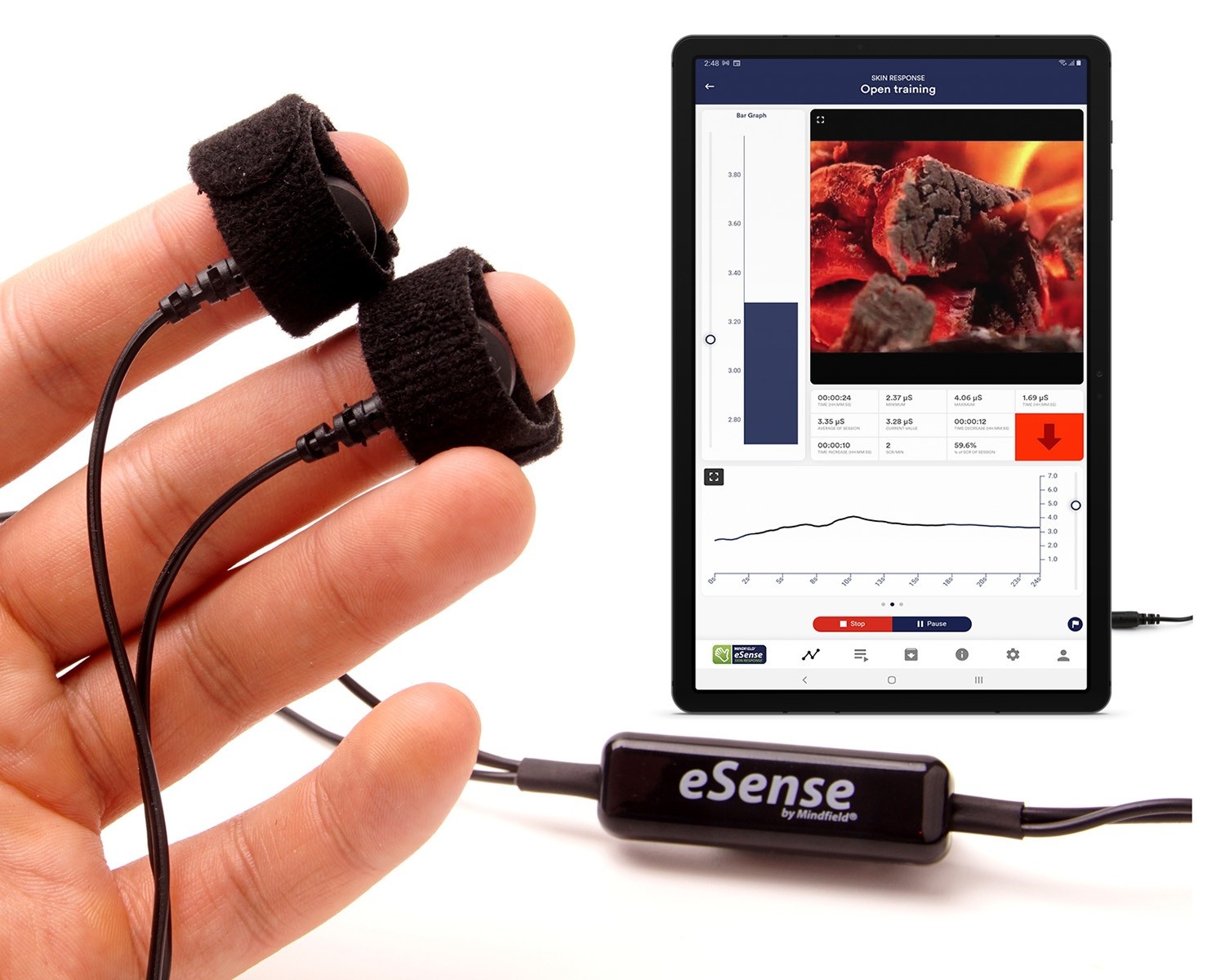VR Therapy Biofeedback Devices Buyer's Guide
Biofeedback devices measure a client's physiological changes for the purpose of monitoring and guiding exposure therapy or providing feedback that reinforces client skills training. Examples of biofeedback measures that may be used in therapy include breathing (respiration), galvanic skin response (GSR), heart rate, heart rate variability, etc.
Biofeedback devices come in many forms including standalone devices with their own display, wearable devices, and smartphone accessories that use the display on the smartphone. Smartphone based biofeedback sensors may also come with their own app.
Some VR therapy products can record measurement data from compatible biofeedback devices. Products that support biofeedback data recording may offer a biofeedback device as part of a product package.
VR therapy product support for biofeedback may include the ability to automatically record biofeedback device data during VR exposure therapy. This data can then be correlated with client feedback (SUDS ratings) and information on changes in the virtual environment to provide a comprehensive record for the client's chart.
A therapist can also use biofeedback with VR therapy products that do not provide specialized support. In this case, the therapist can track readings manually or record them in the biofeedback device and manually coordinate them with client feedback (SUDS) and VE changes.
Figure: Biofeedback Sensor Example (MindField)

When selecting a biofeedback device for use with a VR therapy product that supports biofeedback data collection, the first requirement is therapy product compatibility. Ask the VR therapy product vendor for a list of compatible devices or technical specifications for supported devices.
Where to Buy
Biofeedback devices may be sold by the VR therapy product vendor, either as part of a product package or separately. Other sources of biofeedback devices include manufacturer direct, specialty medical device retailers, and online electronics retailers.

